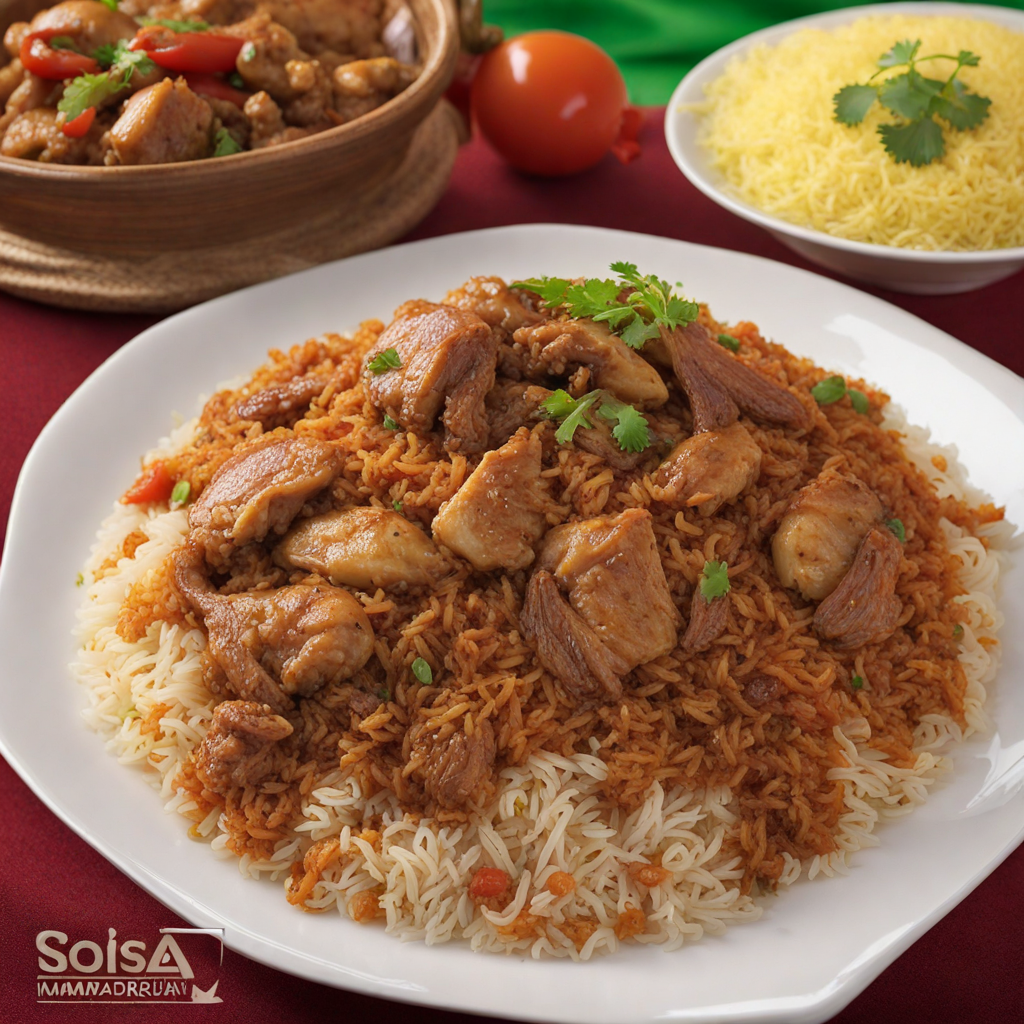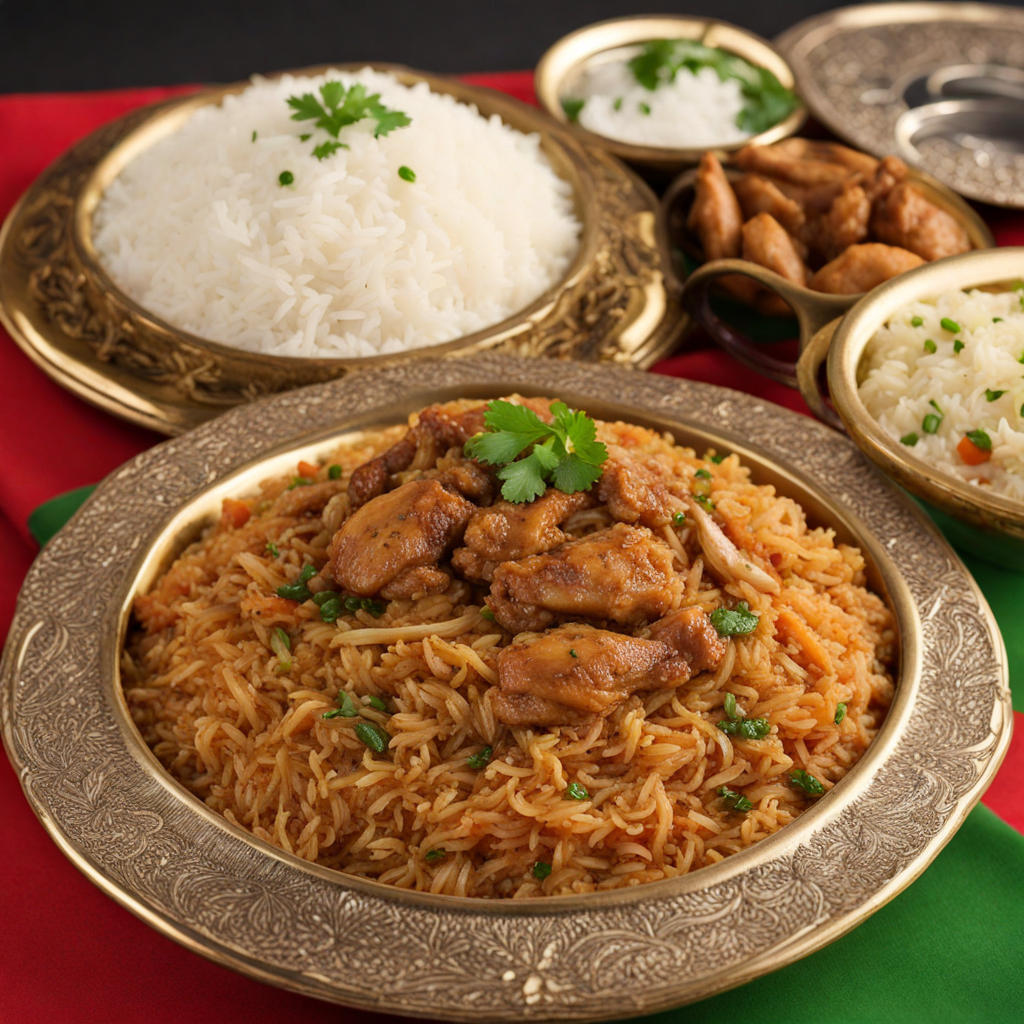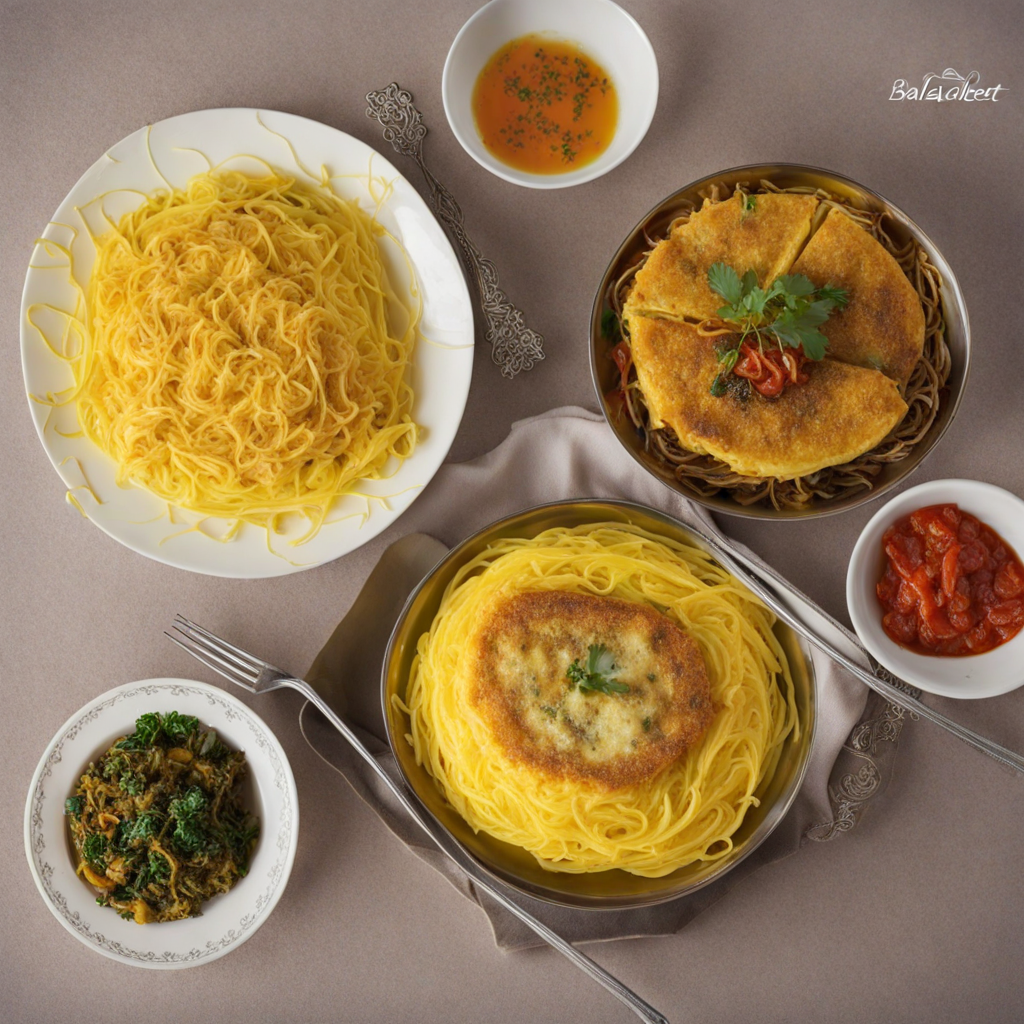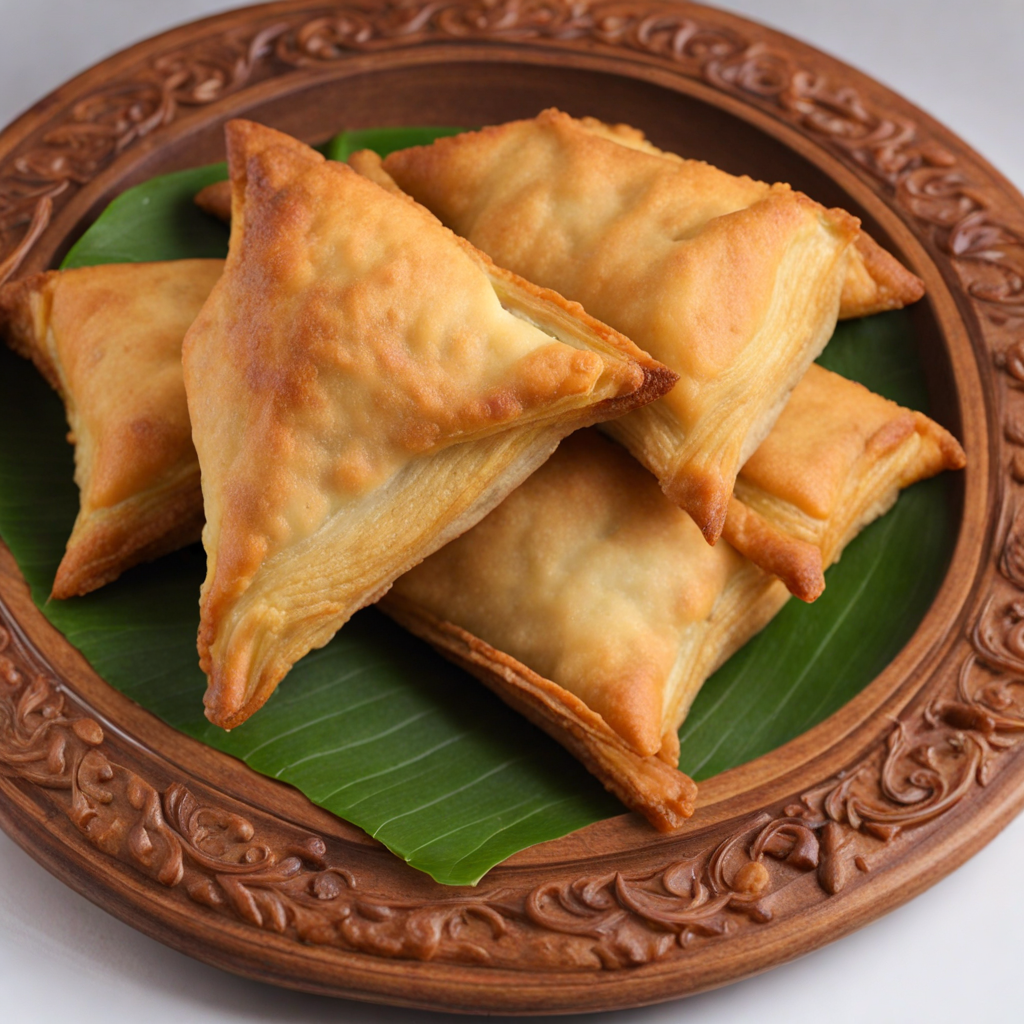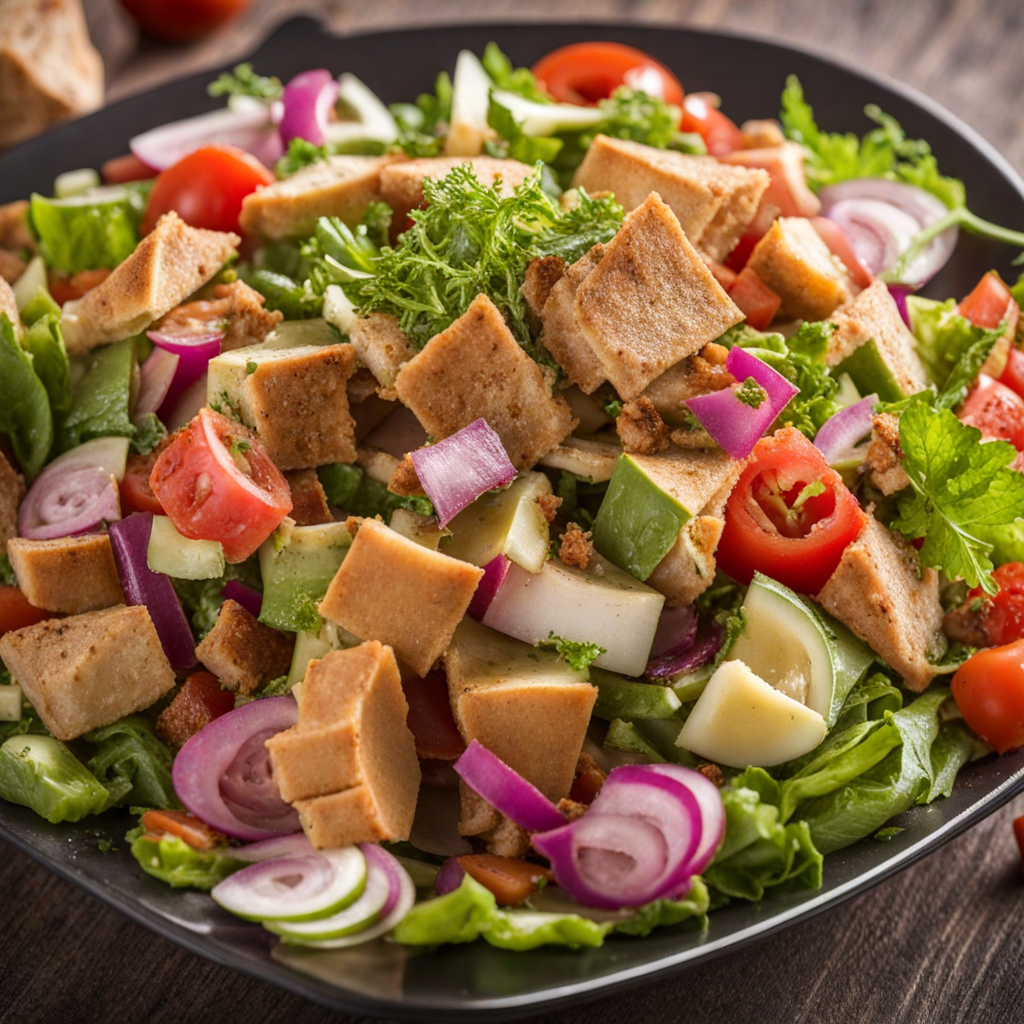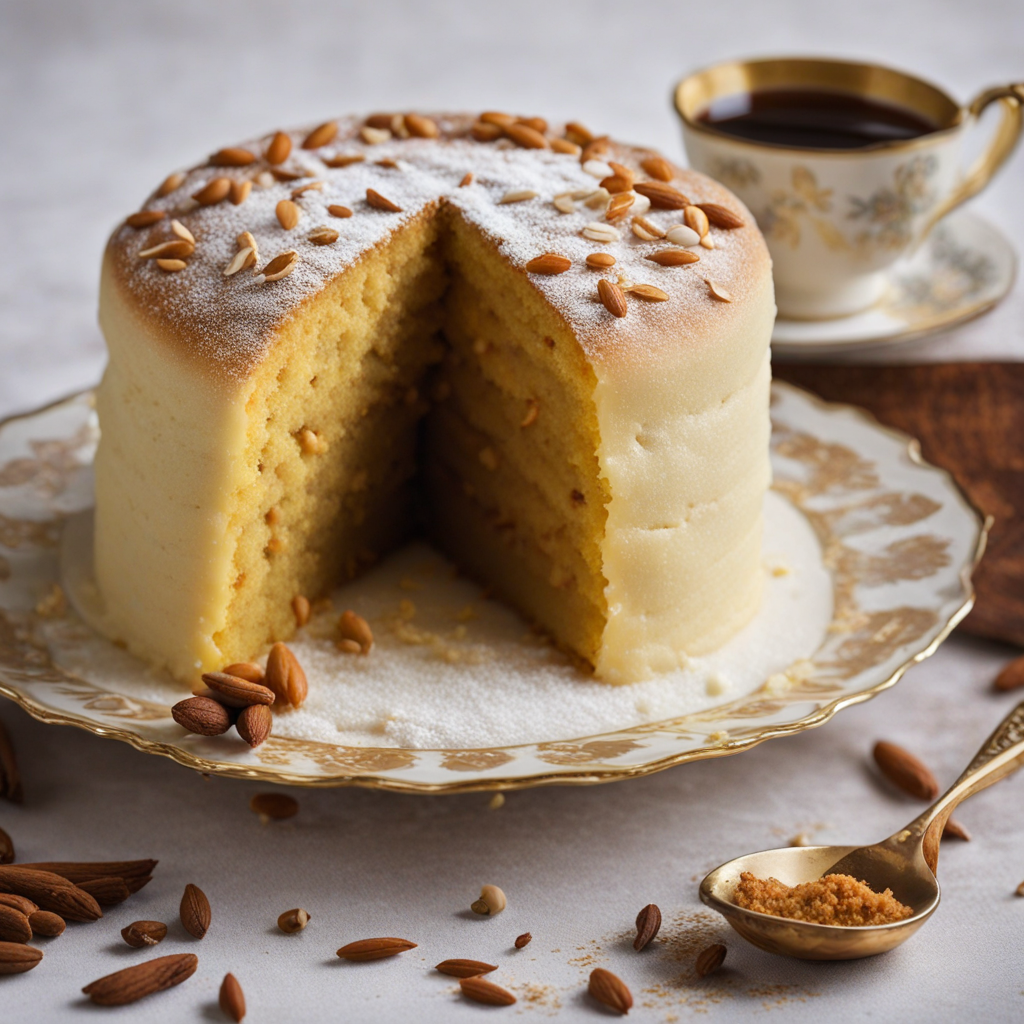Madrouba
Madrouba is a traditional Kuwaiti dish that combines a rich blend of flavors and textures, making it a unique culinary experience. At its core, Madrouba consists of rice cooked with tender chicken or lamb, which is often simmered with a medley of spices such as turmeric, cardamom, and cumin. The slow cooking process allows the meat to become incredibly tender, infusing the rice with a savory broth that enhances its natural flavor. The dish is characterized by its creamy, porridge-like consistency, achieved by mashing the rice and meat together, resulting in a comforting and hearty meal that is both satisfying and nourishing. One of the most delightful aspects of Madrouba is its aromatic profile. The spices used in the dish create a warm and inviting scent that wafts through the kitchen, drawing people in and making it hard to resist a taste. The addition of garlic and onions sautéed to golden perfection adds depth to the flavor, while a touch of lemon juice or yogurt can be drizzled on top for a brightness that balances the dish. This combination of spices and ingredients reflects the rich culinary heritage of Kuwait, where flavors are bold yet harmonious. Madrouba is typically served with garnishes like fried onions, fresh herbs, and sometimes a sprinkle of nuts, adding a delightful crunch to the creamy base. It is often enjoyed as a communal dish, bringing friends and family together around the table. Whether you are savoring it at a local restaurant or making it at home, Madrouba promises to introduce you to the comforting and delicious taste of Kuwaiti cuisine, offering a perfect blend of tradition and flavor that is sure to leave a lasting impression.
How It Became This Dish
Origin of مدروبة مدروبة, also known as "Mudrooba," is a traditional dish from Kuwait with deep roots in the culinary heritage of the Arabian Peninsula. The dish is primarily composed of rice, fish, and a variety of spices, reflecting the region’s reliance on both agriculture and maritime resources. The name "Mudrooba" is believed to derive from the Arabic word "darba," meaning to beat or to mix, which aptly describes the method of preparing this flavorful meal. The origins of مدروبة can be traced back to the coastal communities of Kuwait, where fishing was a vital part of daily life. As with many traditional dishes, it is thought to have developed as a means of utilizing available resources efficiently. The local fishermen would often bring home their catch, particularly fish like the Hamour (a type of grouper), which would be combined with rice and spices to create a filling and nutritious meal. This practice not only ensured that no part of the catch went to waste but also showcased the ingenuity of the Kuwaiti people in adapting their food to the ingredients at hand. \n Cultural Significance مدروبة is more than just a meal; it holds a significant place in Kuwaiti culture and communal life. Traditionally, this dish is served during family gatherings, festive occasions, and special celebrations. Preparing Mudrooba is often a communal activity, involving multiple family members who come together to cook and share in the experience. This aspect of its preparation emphasizes the importance of family ties and community bonds in Kuwaiti society. In addition to its role in family gatherings, مدروبة is also a staple during the holy month of Ramadan. As families break their fast at sunset, the rich flavors and satisfying nature of Mudrooba make it a perfect choice for iftar, the evening meal. Its cultural significance is heightened during this time, as it becomes a symbol of hospitality and generosity, reflecting the values of sharing and togetherness that are central to Ramadan. \n Ingredients and Preparation The primary ingredients of مدروبة include rice, fish, and a blend of aromatic spices such as turmeric, cumin, and coriander. The preparation of the dish typically begins with marinating the fish in a mixture of spices and sometimes yogurt, which helps to tenderize the meat and infuse it with flavor. The rice is often cooked separately, sometimes with the addition of saffron or other spices, to complement the dish's overall flavor profile. The cooking process involves steaming the fish over the rice, allowing the rich flavors to meld together. The finishing touch may include a drizzle of ghee or olive oil, enriching the dish with a luxurious texture and taste. It is often garnished with fried onions or nuts, adding both a delightful crunch and an appealing visual element. \n Variations and Evolution As with many traditional dishes, variations of مدروبة exist throughout the region, influenced by local tastes and available ingredients. Over time, the dish has evolved, accommodating new culinary trends while still maintaining its traditional roots. In contemporary Kuwaiti cuisine, some chefs have begun to experiment with Mudrooba, incorporating different types of seafood such as shrimp or even introducing vegetarian versions that use vegetables and legumes in place of fish. This evolution reflects a broader trend in Middle Eastern cuisine, where traditional dishes are often reimagined to suit modern palates while still honoring their historical significance. The incorporation of international flavors and techniques also showcases Kuwait’s position as a melting pot of cultures, where culinary traditions from neighboring countries influence local cooking practices. \n Global Recognition In recent years, مدروبة has gained recognition beyond Kuwait’s borders, as a part of the growing interest in Middle Eastern cuisine worldwide. Food enthusiasts and chefs alike have begun to appreciate the complexities and flavors of this dish, leading to its inclusion in various international food festivals and culinary events. Social media has played a significant role in elevating the profile of مدروبة, with food bloggers and influencers sharing recipes and variations, bringing a new audience to this traditional dish. This international exposure has not only introduced Mudrooba to a global audience but has also encouraged a revival of interest in traditional Kuwaiti recipes, inspiring younger generations to learn and preserve their culinary heritage. \n Conclusion مدروبة serves as a testament to the resilience and creativity of Kuwaiti culture. Its rich history, communal significance, and adaptability illustrate the ways in which food can reflect broader societal values and changes. As it continues to evolve and gain recognition, Mudrooba remains a cherished dish that connects the past with the present, celebrating the culinary traditions of Kuwait while inviting new interpretations and experiences for future generations.
You may like
Discover local flavors from Kuwait


